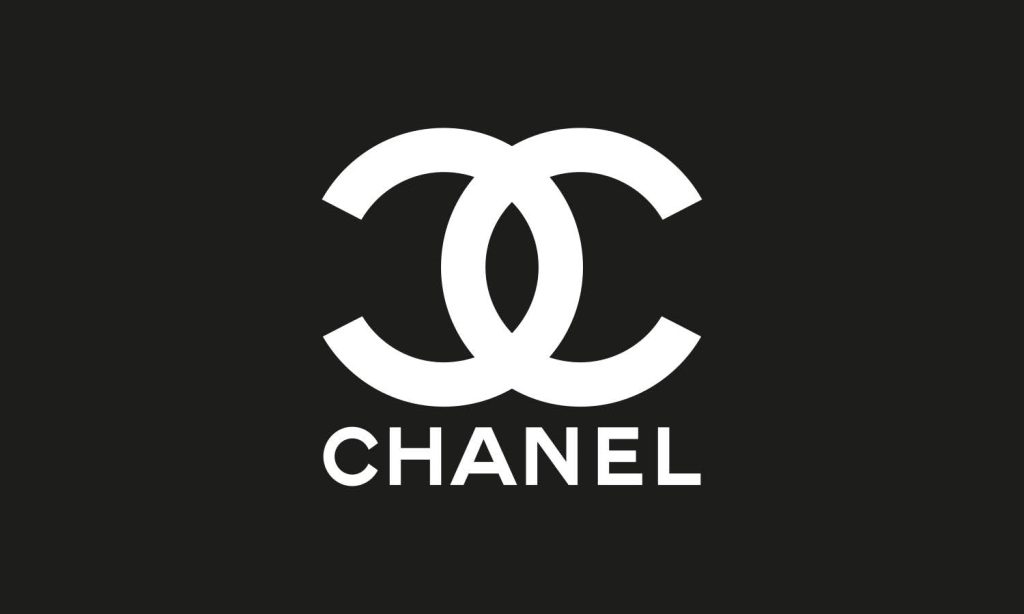Are you curious about the iconic Chanel logo? Look no further! Chanel is one of the most recognizable fashion brands in the world, and their logo is just as famous. The interlocking “CC” logo has become a symbol of luxury and sophistication. But have you ever wondered about the history and meaning behind the design?
Gabrielle “Coco” Chanel founded the brand in 1909, and the logo was introduced in the 1920s. It is said that Coco Chanel was inspired by the ornate interlocking initials of the Château de Crémat in Nice, France. The logo has gone through a few changes over the years, but the interlocking “CC” design has remained the same. It has become a timeless symbol of the brand’s elegance and prestige.
History of Chanel Logo
Origin
The iconic Chanel logo was created in 1925 by the founder of the brand, Gabrielle Bonheur Chanel, commonly known as Coco Chanel. The logo features two interlocking Cs, which have become synonymous with the brand’s image of luxury and high-end fashion.
There are several theories about the origin of the Chanel logo. One theory suggests that the logo was inspired by the stained glass windows of the Aubazine chapel, where Coco Chanel spent her childhood. The geometric shapes on the windows may have influenced the design of the interlocking Cs. Another theory suggests that the logo was inspired by the crest of the Château de Crémat in Nice, which Chanel used to visit. The crest features two interlocking Cs, which may have influenced the design of the logo.
Evolution
The Chanel logo has remained relatively unchanged since its creation in 1925. However, there have been some minor updates and variations over the years. In the 1950s, the logo was simplified and refined to make it more elegant and timeless. The interlocking Cs were made slightly thinner and more elongated, and the spacing between them was adjusted.
In recent years, the Chanel logo has been used in a variety of ways, including as a pattern on clothing and accessories, as well as in digital marketing campaigns. The brand has also experimented with different colors and textures, such as using a metallic finish or incorporating the logo into a floral design.
Overall, the Chanel logo has become one of the most recognizable symbols in the fashion industry, representing the brand’s commitment to luxury, elegance, and timeless style.
Design Elements of Chanel Logo
When it comes to iconic logos, the Chanel logo is one of the most recognizable in the world. The logo is simple yet elegant, and it has remained virtually unchanged since its creation in 1925. In this section, we’ll take a closer look at the design elements that make up the Chanel logo.
Interlocked C’s
The most recognizable feature of the Chanel logo is the interlocking C’s. The C’s are meant to represent the name of the company’s founder, Coco Chanel. The interlocking design of the C’s is said to symbolize the unity between Coco Chanel’s masculine and feminine sides.
The interlocking C’s are often seen in gold or silver against a black background, which creates a sense of luxury and sophistication. The C’s are also sometimes used on their own, without the name “Chanel” accompanying them.
Color and Typography
The color and typography of the Chanel logo are just as important as the interlocking C’s. The logo is typically displayed in black and white, which creates a sense of timelessness and elegance. The black and white color scheme also allows the logo to stand out against any background.
The typography of the Chanel logo is simple and elegant. The font used for the word “Chanel” is a sans-serif font that is easy to read and instantly recognizable. The font is often displayed in all caps, which gives the logo a bold and powerful look.
Overall, the design elements of the Chanel logo work together to create a sense of luxury, elegance, and timelessness. The interlocking C’s, black and white color scheme, and simple typography all contribute to the logo’s iconic status.
Symbolism and Meaning
The Chanel logo is not just a simple design, but a symbol with deep meaning and history. The interlocking C’s have become a universal symbol of luxury, elegance, and timeless fashion. Here is a closer look at the symbolism and meaning behind the iconic Chanel logo:
The Interlocking C’s
The interlocking C’s are the most recognizable element of the Chanel logo. The two C’s stand for the name of the brand’s founder, Coco Chanel. The logo was designed by Coco Chanel herself in 1925 and has remained unchanged ever since. The simplicity of the design is a testament to the brand’s commitment to timeless elegance.
The Color Scheme
The black and white color scheme of the Chanel logo is another important element of its design. Black and white are classic colors that never go out of style. They represent sophistication, simplicity, and timelessness. The use of these colors in the logo is a reflection of the brand’s commitment to timeless fashion.
The History
The history of the Chanel logo is also a significant part of its symbolism and meaning. Coco Chanel was a trailblazer in the fashion industry, breaking down barriers and revolutionizing the way women dressed. The interlocking C’s are a symbol of her legacy and the lasting impact she had on the world of fashion.
In conclusion, the Chanel logo is more than just a design – it is a symbol of luxury, elegance, and timeless fashion. The interlocking C’s, color scheme, and history all contribute to its deep meaning and significance.
Impact on Fashion Industry
The Chanel logo has had a significant impact on the fashion industry since its inception. The interlocking C logo has become one of the most recognizable symbols in the fashion world, and it is synonymous with luxury, elegance, and timeless style. Here are some of the ways in which the Chanel logo has impacted the fashion industry:
1. Brand Recognition
The Chanel logo is instantly recognizable, and it has become a symbol of luxury and sophistication. The logo is often seen on high-end fashion items such as handbags, shoes, and clothing, and it is a status symbol for those who can afford to wear it. The brand recognition that the Chanel logo has achieved is a testament to the power of good branding and marketing.
2. Timeless Style
The Chanel logo has been around for over a century, and it has stood the test of time. The interlocking C logo is simple, elegant, and timeless, and it has become a hallmark of Chanel’s style. The logo has been used in many different ways over the years, but it always maintains its classic look and feel.
3. Influence on Fashion
Chanel has been a major influence on the fashion industry since its inception, and the Chanel logo has played a significant role in this. The brand’s founder, Coco Chanel, was a pioneer in women’s fashion, and she introduced many new styles and trends that are still popular today. The Chanel logo has become a symbol of this influence, and it is often seen on items that are inspired by Chanel’s designs.
4. Pop Culture
The Chanel logo has become a part of pop culture, and it is often referenced in music, movies, and television shows. The logo has been worn by many celebrities over the years, and it is often seen on the red carpet. The Chanel logo has become a symbol of glamour and sophistication, and it is often associated with the rich and famous.
In conclusion, the Chanel logo has had a significant impact on the fashion industry. It has become a symbol of luxury, elegance, and timeless style, and it has influenced fashion trends for over a century. The interlocking C logo is instantly recognizable, and it has become a part of pop culture. The Chanel logo is a testament to the power of good branding and marketing, and it will continue to be a symbol of luxury and sophistication for years to come.
Chanel Logo in Pop Culture
The Chanel logo is not just a symbol of luxury and high-end fashion, but it has also become an iconic image in pop culture. You can see the Chanel logo in movies, TV shows, music videos, and even on social media. Here are some examples of how the Chanel logo has been used in pop culture:
- In the movie “Legally Blonde,” Elle Woods (played by Reese Witherspoon) carries a Chanel handbag with the logo prominently displayed. The scene has become so famous that the handbag is now known as the “Legally Blonde” bag.
- In the TV show “Gossip Girl,” Blair Waldorf (played by Leighton Meester) is often seen wearing Chanel clothing and accessories, including a classic Chanel handbag with the logo on it.
- In the music video for Beyoncé’s song “Upgrade U,” the singer wears a Chanel necklace with the logo on it. The video also features a Chanel handbag and a Chanel jacket.
- On social media, the Chanel logo has become a popular hashtag, with people posting pictures of themselves wearing Chanel clothing and accessories or using the logo as a backdrop for their photos.
The Chanel logo’s presence in pop culture is a testament to the brand’s enduring appeal and influence. It has become a symbol of sophistication, elegance, and luxury that transcends fashion and resonates with people from all walks of life.
Controversies and Legal Issues
Despite its iconic status, the Chanel logo has been at the center of several controversies and legal issues over the years. Here are a few notable examples:
- Trademark Infringement Lawsuits: Chanel is extremely protective of its name and logo, and has taken legal action against numerous companies for trademark infringement. For example, in 2023, the company filed a lawsuit against pre-owned luxury retailer What Goes Around Comes Around for using its federally-protected trademarks and product imagery without permission.
- Cultural Appropriation Accusations: Chanel has also faced criticism for cultural appropriation in its designs. For instance, in 2015, the company received backlash for a runway show that featured models wearing Native American headdresses. Many people accused Chanel of disrespecting Native American culture and perpetuating harmful stereotypes.
- Labor and Environmental Concerns: Like many luxury fashion brands, Chanel has been accused of exploiting workers and contributing to environmental damage. In particular, the company has faced criticism for its use of exotic animal skins, which are often obtained through cruel and unsustainable methods.
Despite these controversies, Chanel remains one of the most iconic and influential fashion brands in the world. Whether you love or hate the company, there’s no denying the impact that its logo and designs have had on the fashion industry and popular culture as a whole.
Conclusion
You have learned about the history and evolution of the iconic Chanel logo, from its inception by Coco Chanel to its current status as a symbol of luxury and sophistication in the fashion industry. The interlocking Cs have become synonymous with elegance, simplicity, and timelessness.
The logo’s black and white color scheme reflects the brand’s core values of simplicity and elegance, and its minimalist design has contributed to its enduring appeal. The logo’s meaning goes beyond just two simple letters, representing the brand’s legacy and contribution to the fashion industry.
The Coco Chanel logo is a testament to the power of branding and design, and its success has inspired countless other fashion brands to strive for iconic status. As you continue to explore the world of fashion and design, keep in mind the lessons that can be learned from the Chanel logo’s enduring appeal and timeless style.
Barry Edwards is a digital marketing expert with a deep understanding of content strategy, logo, and branding principles. Holding a Bachelor’s degree in Marketing from Beaconhill College, he offers valuable insights on digital marketing trends and strategies through his writing. Follow Barry’s work to stay updated on the latest in online marketing and branding.



